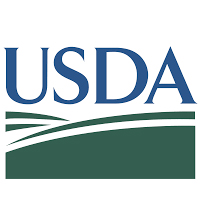Good food is critical to good health; good food derived from a resilient and just food system is critical to a healthy, robust community. The food system includes all food–related activities involving the production, processing, transport, and consumption of food. Programs, policies and advocacy efforts that impact some or all of these elements can contribute to a better—or worse—food system. A systems approach provides a framework to identify and understand levers for action that can improve healthy food access for all and ensure equity across the system for those who produce, distribute, and consume food.
In this country, many leading causes of death, including heart disease, cancer, and diabetes, are diet-related; more than one-third of American adults and 17 percent of children are obese and highly vulnerable to early-onset chronic disease. The cost of hardship, years of potential life loss, medical costs, and lost productivity represent billions of dollars to society each year. Communities challenged by poverty and high unemployment rates are vulnerable to higher rates of diet-related illnesses, and the costs are even more devastating. In high-poverty communities, hunger and food insecurity are an additional health risk. And, when poor access to healthy food options combines with limited household income, many families struggle to put enough good food on their tables to ensure a healthy and productive life.
Millions of Americans experience food insecurity, many of them children or elderly.
These impacts of poor access to healthy food are multi-dimensional in their causes and solutions. Policy and program interventions, using a systems approach, can improve the performance of food systems and help create resilience and capacity to supply nutritious food to all. Using a system approach provides many opportunities for increased equity, good health, and robust local economies. Our food system is a major economic driver, representing millions of jobs and thousands of businesses. Investment in all the system levers will generate jobs and economic growth, helping to boost families’ incomes and access to food. Consumer education to increase nutrition and food system knowledge can promote healthier food choices and diets.
On a National level
Households with children reported food insecurity at a significantly higher rate than those without children, 17 percent compared to 11 percent. Households that had higher rates of food insecurity than the national average included households with children (17%), especially households with children headed by single women (30%) or single men (22%), Black non-Hispanic households (22%) and Hispanic households (19%).
43.1
MILLION
people (13.5 percent) were in poverty.
24.4
MILLION
people (12.4 percent) ages 18-64 were in poverty.
14.5
MILLION
children (19.7 percent) under the age of 18 were in poverty.
4.2
MILLION
seniors (8.8 percent) 65 and older were in poverty.
42.2
MILLION
Americans lived in food insecure households, including 29.1 million adults and 13.1 million children.
13 %
of households (15.8 million households) were food insecure.
14.5
MILLION
children (19.7 percent) under the age of 18 were in poverty.
5%
of households (6.3 million households) experienced very low food security.
In Connecticut, poverty and food security impacts many people
13.9 %
of Connecticut residents (almost 1 in 7) are food insecure and 6 percent are very food insecure. More than 150,000 children live in food-insecure households.
730
THOUSAND
Connecticut residents live below 185 percent of the Federal Poverty Level. More than 113,000 of Connecticut children live in poverty; more than 40 percent of Hartford children live below the poverty level.
100%
of students in Hartford are eligible for free school meals, but far fewer students participate in school breakfast. Connecticut is last in the nation for percentage of schools with a school breakfast program.
37 %
of Hartford’s pre-school age children are overweight or obese, According to a 2012 study by the University of Connecticut, Federal food assistance programs are underfunded and in some cases they are underutilized because of access and enrollment issues.
To discover more information, please click on the logos below:
Statistic Sources: Feeding America and End Hunger Connecticut!




